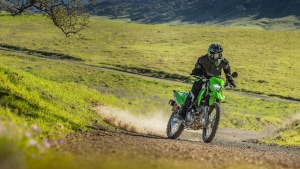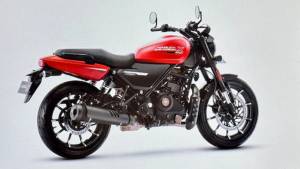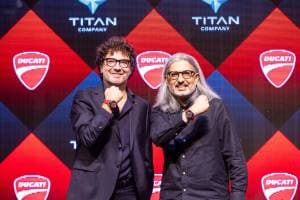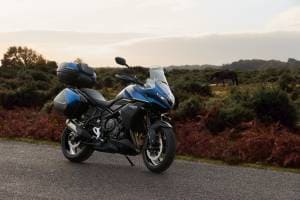Helmet styles: How to pick a helmet that works for you
There are essentially three helmet styles defined by the configuration and coverage the hard outer shell provides. The most coverage is provided by the full-face helmet whose shell covers everything leaving one hole for you to put your head into the shell and another for you to see out of it. Half-face, open-face or Jet helmets eliminate the chin bar of a full-face helmet to create a more airy but less protective helmet. The third kind is the flip-up helmet where the chin bar is mounted on a lockable pivot. So you can enjoy all the useability benefits of a full-face while retaining the convenience of an open-face helmet. Note however, that so far, we have not seen any flip-face helmet pass the impact tests for the chin bar, which means that while they may offer the weather protection of a full-face, they do not offer impact protection like a full face helmet does.
Why wear a half-face
Wtihin the half-face space there is one kind of helmet that you must avoid. This is the one that is shaped like an upturned pudding bowl. It has a flat rim that runs from the middle of your forehead to the back without sweeping down to cover the back of the head. If you're using one of these, you might as well get yourself a cool baseball hat. And say goodbye for good before you ride out. These novelty helmets may help you evade the law but their ability to protect you in a crash is next to not worth talking about.
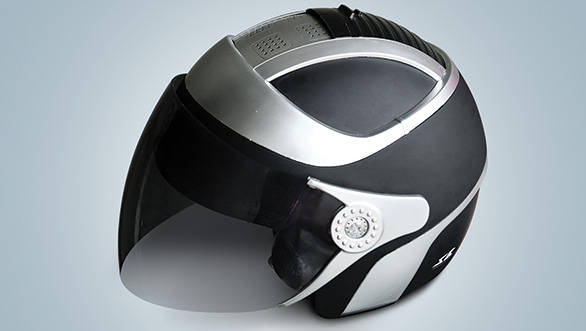 Steelbird SB29 helmet
Steelbird SB29 helmet
You should buy a half-face because you think the trade-off between low facial protection and high utility works for you. What utility? Well, it is easier to communicate while donning one of these, so if you're nipping into a shop/in an ATM then a half-face helmet makes things easier. They are also physically smaller, so storing them under the seat, in backpacks or off backpacks and so forth is easier. They are also typically easier to put on and take off. And finally, if full-face helmets make you claustrophobic then perhaps the open-face is the only solution to resort to when on the bike. Bonus? Half-faces are cheaper than full-face helmets when they're otherwise feature and spec equals.
Would I wear one?
No chance. Half-faces don't protect the face which statistically is prone to injury in motorcycle crashes. I barely enjoy shaving, so facial road rash is not on my to-experience list. Also, I don't like the fact that half-face helmets usually protect you less from flying debris and small particulates in the air. If I absolutely had to, I'd look for half-faces that have the sides of the face opening jut forward so that the exposed facial area is as small as possible.
Another problem is that the Indian half-face helmets - we tried very hard to find one for office use not too long ago - have terrible fits and finishes with only a handful of exceptions. Imported brands like HJC, Momo and Shark do make decently priced, well-made half-face helmets but think twice before you fall into the trap of favouring convenience over protection.
Why wear a full-face helmet
Well, it is easier to discuss why not to wear a full-face helmet. They're significantly larger than half-face helmets and a decently made full-face will just not fit under the seat of almost any Indian scooter you can buy today. Further, they're inconvenient to lug around when you're going to the shops, movies etc. And if they're even slightly expensive and you leave them, locked or otherwise, on the bike, they will just get stolen. They are also more expensive.
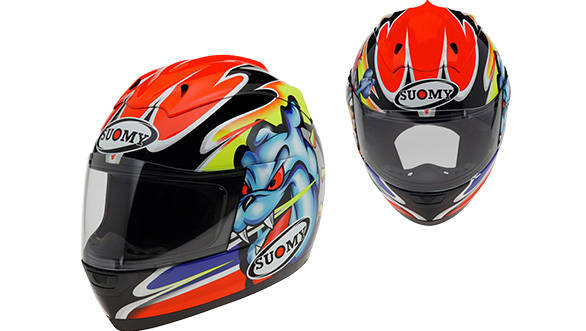 The Suomy Trek Dog helmet
The Suomy Trek Dog helmet
But there are four great reasons to wear full-face helmets. First, they offer protection. No other style of helmet offers more comprehensive head protection than a well-made full-face motorcycle helmet. Second, read the first point again. Third, read the first point again because it is that important. Fourth, because they close the face off fully, they also offer the best protection from the elements, whether it is flying sand in the air, road debris or anything else that can get in your eyes or on your face.
Why wear a flip-face helmet
Because it is, very nearly, the best of both worlds. A flip-face allows you all the convenience of an open-face (except for portability) while offering all the benefits of a full-face except for impact protection on the chin and face. It does sound like both the negatives are too big to overlook - and in my case they are - but the large legion of flip-face wearing motorcycle riders around the world say that their convenience is not to be overlooked.
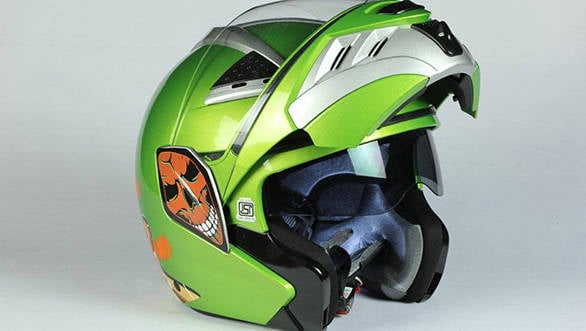 Steelbird helmet
Steelbird helmet
Studds Ninja range is a long-standing Indian range of flip-faces but the international range - see the Shark Evoline 3 especially - offer a number of functional improvements. The Shark solves the usual issue of riding with the chin bar flipper up that causes aerodynamic problems. The French helmet tucks the chin bar snugly against the back of the shell where it becomes almost like a spoiler. Neatly done.
The problem of course is that no flip-face, so far, has matched the impact performance of a full-face helmet which is why, I, personally, still refuse to get one.
Read more on what goes into the making of a helmet

